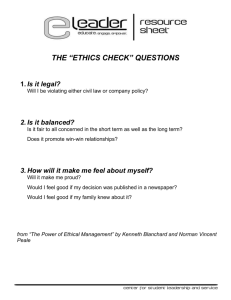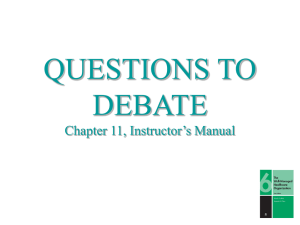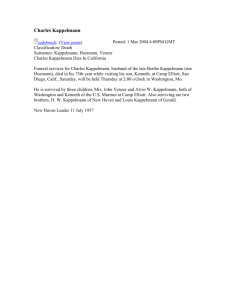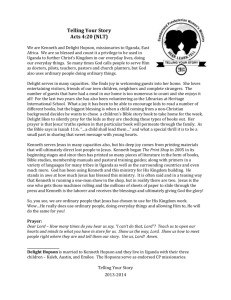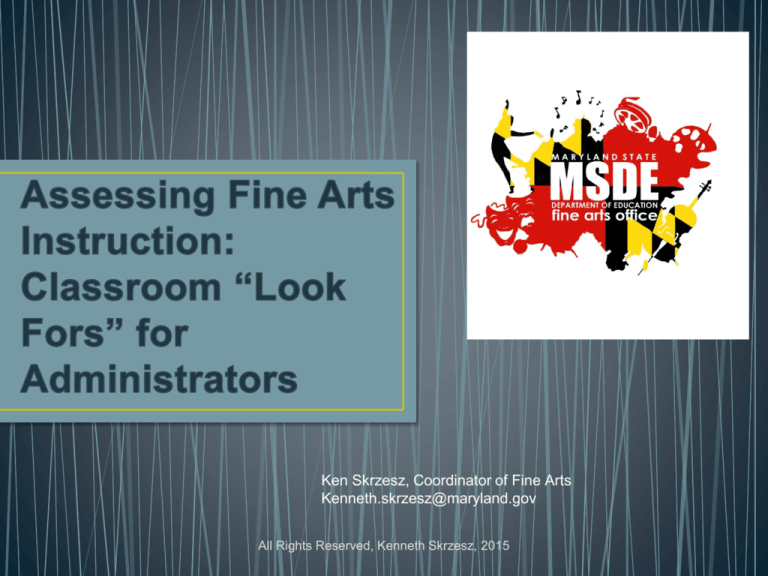
Ken Skrzesz, Coordinator of Fine Arts
Kenneth.skrzesz@maryland.gov
All Rights Reserved, Kenneth Skrzesz, 2015
All Rights Reserved, Kenneth Skrzesz, 2015
All Rights Reserved, Kenneth Skrzesz, 2015
4 Models of Phases – Non-Linear
Model 1
Petty
Model 2
Taylor
Model 3
Graham
Model 4
Wallas
Inspiration
Preparation
Intent
Preparation
Clarification
Incubation
Explore/Gather
Incubation
Evaluation
Insight
Connect/Experi
ment
Illumination
Distillation
Evaluation
Create
Implementation
Incubation
Elaboration
Evaluate
Perspiration
All Rights Reserved, Kenneth Skrzesz, 2015
• FOCUS: Opening exercise (bringing students into a creative environment)
• DETAIL: Warm-up and introduce the topics to be covered (specifics that
engage mind and body)
• DISCOVERY: Perform activities of creativity (the freedom to interpret)
• APPLICATION: Create work (technique meets product)
• PRESENTATION: Share work (synthesis of new information)
• LINK: Connect what was accomplished to “where we go from here?”
All Rights Reserved, Kenneth Skrzesz, 2015
All Rights Reserved, Kenneth Skrzesz, 2015
All Rights Reserved, Kenneth Skrzesz, 2015
Explore an Open-Ended
Question (Concept) in a
Dependable
Environment
Define Personal
(Independent)
and Collaborative
Processes
Develop Creative Habits
Over Time and Through
Planning
Deepen Knowledge of
Content through
Authentic Application
(Performance-Based
Outcome)
Acquire 21st
Century Skills
Build Skills and
Techniques while
Creating a
Product
Effective teachers are constantly asking 4
questions – all grades, all ability levels – in
very subtle ways:
Who am I?
Who are my students?
What might they become?
What might we become together?
(Critical Pedagogy for MUED by Frank Abrahams)
Students are constantly asking 4 questions –
all grades, all ability levels – in very subtle
ways:
Do you see me?
Do you hear me?
Do I matter?
Are you brave enough to share your
process?
Speed adversely affects creativity and
work:
“When creativity is under the gun, it
usually ends up getting killed… Complex
cognitive processing takes time, and,
without some reasonable time for that
processing, creativity is almost
impossible.”
Harvard Business Review
All Rights Reserved, Kenneth Skrzesz, 2015
All Rights Reserved, Kenneth Skrzesz, 2015
Creative
Classroom
Habit of
Mind
Focus Observe
Entering the
Environment Envision
MSDE Effective
Lesson
Framework
Warm-Up,
Activate Prior
Knowledge
(Could be
Motivation or
Management)
Danielson
Domain
Marzano Design
Questions and
Domains
1b: Knowledge of
Learning Process
1e: Designing
Coherent
Instruction
DQ2 (2):
Organizing
Students to
Interact with New
Knowledge
DQ3 (9):
Reviewing Content
What Do You See?
• A Set or Developing Warm-Up Activity
• Responses to Prior Knowledge Prompts
All Rights Reserved, Kenneth Skrzesz, 2015
Creative
Habit of
Classroom Mind
Detail –
Develop
Introduce Craft
Topics and
Themes
MSDE Effective
Lesson
Framework
Objective and
Purpose
Danielson
Domain
Marzano Design
Questions and
Domains
1c: Setting
Instructional
Outcomes
2b: Establishing a
Culture for
Learning
3a: Expectations
for Learning
DQ1 (1): Providing
Clear Learning
Goals & Scales
(Rubrics)
What Do You See?
• Responses to Presented Thematic Concepts
• Technique-Building Activities in Response to a Presented
or Researched Topic or Theme
All Rights Reserved, Kenneth Skrzesz, 2015
Creative
Habit of
Classroom Mind
MSDE Effective
Lesson
Framework
Danielson
Domain
Discovery Stretch and
–
Explore
Activities
of
Creativity
Instructional Input 1e: Lesson & Unit
Structure
(Instructional
3a: Explanations of
Strategies)
Content
3b: Questioning &
Discussion
Techniques
3c: Structure &
Pacing
Marzano Design
Questions and
Domains
DQ2 (2-6):
Previewing,
Chunking,
Processing,
Elaborating New
Content/
Information
DQ5 (3-6):
Response Rates,
Pacing, Intensity,
Enthusiasm
What Do You See?
• Individual and/or Collaborative Responses to Thematic
Concepts
• Teacher Facilitation of Developed Artistic Techniques to be
Challenged, Improved and Utilized
All Rights Reserved, Kenneth Skrzesz, 2015
Creative
Classroom
Habit of
Mind
MSDE Effective
Lesson
Framework
Danielson
Domain
Application Engage
Student Learning* 3c: Engage
Students in
– Produce and Persist (Curriculum
Learning
Planning)
Work
3c: Activities &
Assignments
3c: Grouping of
Students
Marzano Design
Questions and
Domains
DQ4 (16-17):
Organize &
Engage Students
in Cognitively
Complex Tasks
DQ5 (1-9):
Management &
Instructional
Activities to
Engage Students
What Do You See?
•
•
•
•
Urgency Building Toward Production
Artistic Techniques and Aesthetic Judgments Informing Decisions
Ongoing Teacher and Student Assessment of Technique and Developing Product
Teacher Facilitation of Time Management and Increasing Creative and Technical
Prowess
• Teacher Prompted Metacognitive Check-Ins
All Rights Reserved, Kenneth Skrzesz, 2015
Creative
Classroom
Habit of
Mind
MSDE Effective
Lesson
Framework
Checking for
Understanding
(Management)
Danielson Domain Marzano Design
Questions and
Domains
Presentation Express
DQ1 (2): Tracking
3d: Monitoring
– Share Work
Student Learning Student Progress
DQ9 (16-19):
3d: Feedback to
Asking Questions
Students
&
Guided Practice 1e: Learning
Probing Incorrect
(Curriculum
Activities &
Answers
Planning)
Instructional
DQ3 (11): Using
Groups
Homework
What Do You See?
3d:Student SelfDQ3 (12-13):
• Synthesis of New Information
Examining
Assessment &
• Developing Products Reflecting
Similarities and
Monitoring
Technique and Process
Differences, Errors
3e:
Teacher
• Students Responding in a Safe
in Reasoning
Flexibility
&
Environment
DQ3 (14):
Responsiveness
• Teacher Facilitation of Presentation
Environment by Modeling Feedback
All Rights Reserved, Kenneth Skrzesz, 2015
Practicing Skills,
Strategies &
Processes
Creative
Habit of
Classroom Mind
MSDE Effective
Lesson
Framework
Link –
Reflect
Closure
What
(Instructional
Happened Understand Strategies)
and Where the World
Do We Go
Teacher
From
Reflection
Here?
(Curriculum
Planning)
Danielson Domain Marzano Design
Questions and
Domains
1e: Lesson & Unit Domain 2:
Structure
Planning &
3c: Structure &
Preparing
Pacing
1e: Designing
Domain 3:
Coherent
Reflecting on
Instruction
Teaching
4a: Reflecting on
Teaching
What Do You See?
• The “Why” being Presented, Challenged and Discussed
• Teacher/Student Facilitation of Connections Beyond the Student and
Classroom
All Rights Reserved, Kenneth Skrzesz, 2015
Benefits of the Creative Process:
(General Research of Artist’s Process
Statements and Task Force Report)
21st Century Skills:
(The Partnership for 21st Century Skills)
Metacognition, Creativity, Innovation,
Imagination, Ideation
Editing
Think Creatively, Be Self-Directed Learners, Work
Independently
Make Judgments and Decisions, Reason Effectively
Self-Efficacy
Adapt to Change, Be Flexible, Manage Goals and Times,
Manage Projects
Critical Thinking and Problem Solving
Critical Thinking, Critical Judgment,
Problem Solving
Concentration, Create Meaning,
Understand Meaning, Inquiry,
Research, Cultural Literacy,
Understanding Other Subjects
Perseverance, Sensory Perception
Production, Motor and Technical Skills
Access, Evaluate, Use and Manage Information, Analyze
Media
Act On Creative Ideas
Implement Innovations, Apply Technology Effectively
Produce Results, Create Media Products
Communication, Collaboration,
Communicate Clearly, Interact Effectively with Others
Teamwork, Empathy
Work Effectively with Diverse Teams, Work Creatively
All Rights Reserved,
Kenneth
Skrzesz, 2015with Others
with Others,
Collaborate
Creativity takes the raw data of the 5
senses and turns it into a unique creative
expression. No one else is metabolizing
the experience in the same way.
Deepak Chopra
All Rights Reserved, Kenneth Skrzesz, 2015
Kenneth.skrzesz@maryland.gov

